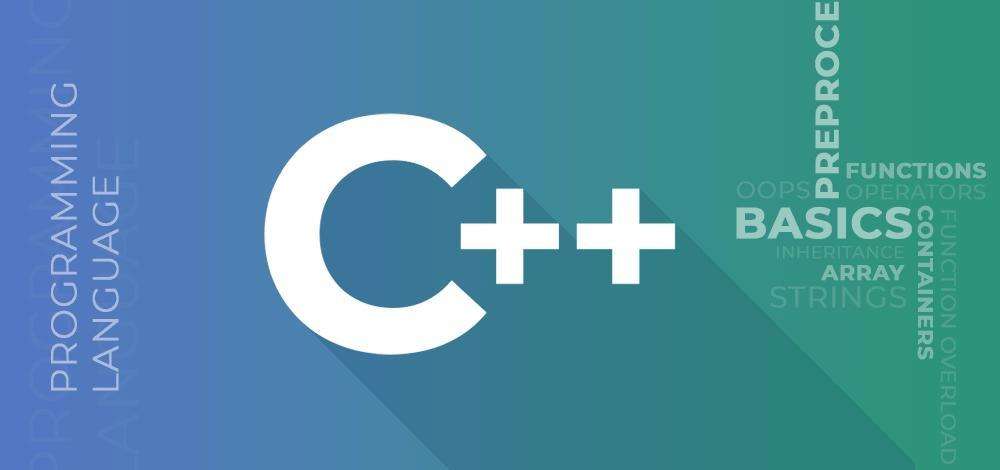
In the domain of algorithms, each problem-solving journey is a unique adventure! Algorithms are the heartbeats of software engineering interviews, pulsing through every question like a rhythm that tests your logical prowess and coding finesse.
Whether you’re a budding programmer with eyes full of code or a seasoned developer with a knack for problem-solving, algorithm interview questions are the gatekeepers to your dream tech job.
In this blog post, we’ll embark on problem-solving some of the most commonly asked algorithm interview questions. We’ll peek behind the curtain of intimidating terms and see how these logical constructs are not just problems but stories waiting to be told. So, grab a cup of your favourite brew, settle into your cosiest chair, and let’s unravel the enigma of algorithms together.
Common Algorithms Questions Topic wise
Interview Questions on Sorting Algorithms:
Question 1: Define a sorting algorithm.
Answer: A sorting algorithm organizes items in a predetermined sequence, typically ascending or descending, simplifying the process of managing and locating data.
Question 2: Can you categorize sorting algorithms?
Answer: Sorting algorithms fall into two categories: Comparison based sorting algorithms and non-comparison-based sorting algorithms. Comparison based sorting algorithms include Bubble Sort, Selection Sort, Insertion Sort, Merge Sort, Quick Sort, Heap Sort, etc. And non-comparison-based sorting algorithms include Radix Sort, Counting Sort and Bucket Sort.
Question 3: Why are sorting algorithms significant?
Answer: Sorting algorithms are vital because they improve the performance of other algorithms that rely on pre-sorted data, like search algorithms. They’re also key in human-readable outputs and are integral to various algorithmic strategies.
Question 4: How do comparison-based differ from non-comparison-based sorting algorithms?
Answer: Comparison-based algorithms sort by comparing item values, whereas non-comparison-based ones sort through other methods, like grouping or counting, without comparing the actual items.
Question 5: Describe the ideal sorting algorithm.
Answer: The perfect sorting algorithm would be stable, operate in minimal space, guarantee a maximum of O(n log n) comparisons, and adapt to nearly sorted data for faster sorting.
Ideal sorting Algorithms should posses the Following properties:
- Stable: Equal keys are not reordered.
- Operates in place: Requires O(1) extra space.
- Worst-case O(n log n) key comparisons: Guaranteed to perform no more than O(n log n) key comparisons in the worst case.
- Adaptive: Speeds up to O(n) when the data is nearly sorted or when there are few unique keys.
The choice of sorting algorithm depends on the specific requirements of the application. Some algorithms prioritize stability, while others prioritize speed or space efficiency.
Question 6: What does “Sort in Place” mean?
Answer : “Sort in Place” refers to algorithms that sort data within the original memory space, eliminating the need for extra storage.
Question 7: Which sorting algorithm excels with almost sorted data?
Answer: Insertion Sort is typically the most efficient for data that’s already mostly sorted, as it requires minimal adjustments.
Question 8: Why prefer Merge Sort over Quick Sort for linked lists?
Answer: Merge Sort is better for linked lists due to its ability to divide and merge without needing random access, unlike Quick Sort, which is less suited due to its reliance on random access and potential inefficiency.
Question 9: What is stability in sorting algorithms, and why does it matter?
Answer: Stability ensures that identical elements retain their original order post-sorting. It’s crucial for maintaining predetermined sequences of equal elements.
Question 10: Which sorting algorithm is optimal for large datasets?
Answer: For large datasets, algorithms like Merge, Quick, or Heap Sort are preferred due to their O(n log n) time complexity, which is efficient for handling vast amounts of data.
Question 11: What’s the mechanism behind Quick Sort?
Answer: Quick Sort operates on the Divide and Conquer principle. It selects a ‘pivot’ element, then repositions the array elements so that those smaller than the pivot are to its left, and larger ones to the right. This partitioning is then recursively applied to the subarrays on each side. Arrays of size one or zero are already sorted.
Question 12: Describe the worst-case scenario for Quick Sort’s time complexity.
Answer: In the worst case, Quick Sort may take O(N^2) time to sort the array. The worst case will occur when every time the problem of size N, gets divided into 2 Subproblems of size 1 and N – 1.
Interview Inquiries on Search Algorithms:
Question 1: Define a search algorithm.
Answer: A search algorithm is a technique for locating a particular item within a dataset. These algorithms are crafted to search for or retrieve an element from any data structure where it’s stored.
Question 2: What varieties of search algorithms exist?
Answer: Various search algorithms exist, such as Linear Search, Binary Search, Depth-First and Breadth-First Searches, and Hashing, each employing a distinct method to locate elements.
Question 3: Describe Linear Search and its time complexity.
Answer: Linear Search sequentially examines each item in a dataset until it discovers the sought-after element or reaches the end. Its time complexity is $$O(n)$$ in the worst-case scenario.
Question 4: How is Binary Searchexecuted?
Answer: Binary Search systematically halves a sorted dataset, progressively narrowing the search area by comparing the midpoint with the target until the item is found or options are exhausted. Its time complexity is O(log n).
Question 5: What prerequisites are needed for Binary Search?
Answer: Binary Search necessitates a sorted dataset and index-based element access for effective navigation.
Questions 6:Why is the complexity of Binary Search O (log2n) ??
Answer: Binary Search diminishes the search scope by half with each iteration, leading to a logarithmic decrease in the number of elements to be searched, hence the time complexity of O(log2n), where n represents the total elements in the sorted dataset.
Question 7: How does Hashing facilitate searching?
Answer: Hashing employs a hash function to assign an index to each item, enabling average-case constant-time search operations by organizing elements within a hash table.
Question 8: How do Linear Search and Binary Search differ?
Answer: Linear Search inspects elements in sequence, whereas Binary Search efficiently reduces the search area by half at each step, making it more effective for sorted datasets with a time complexity of O(log n).
Question 9: Between Recursive and Iterative Binary Search, which is more efficient?
Answer: Iterative Binary Search generally surpasses Recursive Binary Search in efficiency because it circumvents the additional load of recursive calls and stack space usage, thus conserving memory and potentially hastening execution, particularly for extensive datasets.
Question 10: Why opt for Binary Search over Ternary Search?
Answer: Binary Search is favoured for pinpointing specific values in sorted arrays, as it consistently bisects the search area, ensuring efficient searches with a time complexity of O(log2n). Binary Search excels in identifying extremities in monotonic functions, while Ternary Search is adept at finding peaks or troughs in unimodal functions. Moreover, Ternary Search’s time complexity is O(2 * log3N), which is higher than Binary Search’s O(log2N).
Question 11: When should you use each search algorithm?
Answer: The selection of a search algorithm should be guided by factors such as the data structure, dataset size, and the desired efficiency of the search, with Binary Search being ideal for sorted arrays and Hashing for searches requiring constant time.
Essential Questions on Greedy Algorithms for Interviews:
Question 1: Can you describe a greedy algorithm?
Answer: A greedy algorithm consistently makes the best local decision, hoping these choices will lead to the most favourable overall outcome.
Question 2: What’s the purpose of a greedy algorithm?
Answer: Greedy algorithms are used in optimization scenarios, where step-by-step optimal decisions are believed to result in the most advantageous overall solution. They are applied across various fields, including scheduling, network routing, resource distribution, and optimizing combinations.
Question 3: Could you explain Dijkstra’s algorithm and where it’s applied?
Answer : Dijkstra’s algorithm is designed to determine the shortest path from a starting point to all other points in a graph with weighted paths. It’s particularly useful in optimizing routes and networks.
Question 4: What is the activity selection issue, and how does a greedy method resolve it?
Answer: The activity selection issue is about choosing the greatest number of mutually exclusive activities from a set that requires the same resource. The greedy method tackles this by first arranging activities based on their finish times and then consistently choosing the earliest-ending compatible activity.
Question 5: How do greedy algorithms help find a graph’s minimum spanning tree?
Answer: Two greedy methods, Prim’s and Kruskal’s algorithms, are employed to discover a weighted graph’s minimum spanning tree. Prim’s begins with a random vertex and adds the least heavy edge each time until all vertices are connected. Kruskal’s sorts the edges by weight and adds them progressively, avoiding any loop formation.
Question 6: What is Huffman coding, and how does it apply a greedy approach to data compression?
Answer: Huffman coding is a lossless data compression method that assigns variable-length codes to characters, with shorter codes for more common characters, following a greedy method to minimize the overall code length. This technique is a classic example of a greedy algorithm’s application in data compression.
Key Interview Questions on Dynamic Programming:
Question 1: What characterizes dynamic programming?
Answer: Dynamic programming is a strategy that simplifies complex issues by dividing them into manageable Subproblems, storing their solutions to prevent redundant work, in contrast to other methods that might tackle problems head-on without reutilizing results.
Question 2: Describe the Fibonacci sequence and dynamic programming’s role in computing it.
Answer: The Fibonacci sequence is a progression where each term is the sum of its two predecessors. Dynamic programming enhances efficiency by memorizing previously computed Fibonacci numbers, thus bypassing repeated calculations.
Question 3: Which problems are ideal for dynamic programming?
Answer : Dynamic programming is particularly effective for issues characterized by overlapping subproblems and an optimal substructure, where comprehensive solutions are constructed from smaller, optimal ones.
Question 4: What is memoization, and its significance in dynamic programming?
Answer: Memoization is the practice of recording the outcomes of prior computations to eliminate unnecessary recalculations within recursive algorithms, thereby saving time and boosting efficiency. It’s a technique employed in the top-down approach.
Question 5: How does dynamic programming approach the knapsack problem?
Answer: Dynamic programming tackles the knapsack problem by systematically evaluating all combinations of items and weights, preserving the solutions of subproblems to forego repeat calculations.
Question 6: What are the advantages and drawbacks of memoization or the top-down approach?
Answers:
Advantages:
- Enhances efficiency by caching results of prior computations.
- Simplifies coding through recursion, aiding in clarity and maintenance.
- Often yields a more direct and intuitive problem-solving method.
Drawbacks:
- Can lead to increased memory use due to function calls and result caching.
- The recursion depth limit in some languages may constrain the solvable problem size.
- Necessitates meticulous management of edge cases and cache initialization to prevent mistakes.
Question 7: How do top-down and bottom-up dynamic programming differ?
Answer: Top-down dynamic programming, or memoization, begins with the overarching problem and recursively breaks it down, while bottom-up dynamic programming, or tabulation, incrementally constructs solutions starting from the smallest subproblems.
Question 8: When might dynamic programming not yield the best solution?
Answer: Dynamic programming might fall short for problems that lack an optimal substructure or overlapping subproblems, such as those with variable constraints or non-linear interdependencies. In such cases, alternative methods may be more effective.
Interview Topics on Recursive Algorithms:
Question 1: What defines recursion in problem-solving?
Answer: Recursion is a technique where a function resolves smaller segments of a problem by calling upon itself.
Question 2: Could you mention a problem that recursion can address?
Answer: Recursion is adept at solving problems like calculating factorials, generating the Fibonacci series, and navigating through hierarchical structures like trees.
Question 3: Why is establishing a base case crucial in recursion?
Answer: The base case acts as the stopping signal for recursion, averting endless cycles and guaranteeing the process concludes.
Question 4: Contrast recursion with iteration.
Answer: Recursion tackles problems via functions that invoke themselves, whereas iteration repetitively executes instructions through loops.
Question 5: How do tail-recursive functions stand apart from their non-tail counterparts?
Answer: Tail-recursive functions are designed for memory efficiency, making the recursive call the final action, thus obviating the need to hold interim outcomes in memory.
Question 6: Can every recursive function be transformed into a non-recursive version?
Answer: Not all recursive functions can be seamlessly converted to non-recursive forms, as certain recursive patterns are deeply intertwined with the call stack’s nature and the recursion’s depth.
Question 7: What strategies can enhance a recursive algorithm’s performance?
Answer: Employing methods such as memoization or dynamic programming can curtail repetitive calculations, thereby boosting a recursive algorithm’s performance.
Question 8: Could you elucidate on backtracking and its connection to recursion?
Answer: Backtracking is a strategy for finding solutions by trying out all potential options and retreating upon encountering a dead end. This approach is frequently realized through recursive algorithms, which allow for an elegant and systematic exploration of possibilities.
Question 9: How is recursion applied in algorithms for traversing trees?
Answer: In tree traversal algorithms, such as depth-first search (DFS), recursion is a natural fit. It enables the algorithm to delve into each node’s offspring, reaching deeper layers of the tree before retracting, thus ensuring a thorough examination of the structure.
Question 10: What role does recursion play in the Towers of Hanoi puzzle?
Answer: Recursion is pivotal in effectively solving the Towers of Hanoi. The recursive process simplifies the challenge into manageable segments, where the task is to shift disks between pegs while observing the game’s rules, demonstrating recursion’s power in breaking down complex problems.
Interview Queries on Divide and Conquer Algorithm:
Question 1: What encapsulates a Divide and Conquer Algorithm?
- Answer: A divide-and-conquer algorithm is a methodical approach to problem-solving that involves:
- Divide: Segmenting the problem into smaller, distinct subproblems.
- Conquer: Addressing each subproblem through recursion.
- Combine: Integrating the solutions of the subproblems to resolve the initial problem.
Such algorithms progressively break down a problem into tinier subproblems, tackled independently. Examples include algorithms like Merge Sort, Quick Sort, and the Fast Fourier Transform.
Question 2: How do you apply Divide & Conquer to determine an array’s maximum and minimum values?
Answers: Utilizing Divide & Conquer, an array is recursively segmented into tinier subarrays until reaching a base case of one or two elements, followed by a comparison of the maximum and minimum values within each subarray.
Question 3: Describe the function of recursion within Divide & Conquer algorithms.
Answer: Recursion is integral to Divide & Conquer algorithms, enabling the subdivision of a problem into subproblems that are individually resolved and then amalgamated to address the larger issue.
Question 4: Provide examples of problems apt for the Divide & Conquer method.
Answer: The Divide & Conquer technique is apt for tasks like sorting algorithms (Merge Sort, Quick Sort), computing the largest subarray sum, multiplying matrices, and various search algorithms.
Question 5: Compare the efficiency of Divide and Conquer algorithms with other problem-solving methods.
Answer Divide and Conquer algorithms typically demonstrate high efficiency, particularly with complex, large-scale problems. However, their effectiveness can vary based on the nature of the problem and the specifics of the implementation.
Question 6: How is the QuickSort algorithm an embodiment of the Divide and Conquer principle?
Answer: QuickSort exemplifies the Divide and Conquer approach by choosing a pivot, partitioning the array, sorting the partitions recursively, and then merging them to achieve a sorted array.
Interview Questions on Backtracking Algorithms:
Question 1: Define the Backtracking Algorithm.
Answer: Backtracking is a recursive problem-solving method that incrementally constructs a solution, retracting steps when it encounters constraints that cannot be satisfied.
Question 2: What’s the rationale behind the term ‘Backtracking’?
Answer: The term ‘Backtracking’ refers to the strategy of piecemeal solution construction, where the process reverses or ‘backtracks’ upon hitting a standstill. It’s a common approach for identifying all potential solutions or the most optimal one.
Question 3: Distinguish between explicit and implicit backtracking constraints.
Answer: Explicit backtracking constraints are those clearly defined within the problem, while implicit constraints are derived from the problem’s inherent logic. Both are instrumental in steering the backtracking search toward viable solutions.
Question 4: Identify the primary challenges associated with Backtracking algorithms.
Answer: Backtracking algorithms can be resource-intensive, potentially exploring numerous paths, which may lead to inefficiencies, particularly in scenarios with expansive solution spaces.
Question 5: When might Backtracking be preferable to alternative algorithms?
Answer: Backtracking is particularly apt for scenarios laden with extensive possibilities, such as puzzle-solving or optimization challenges, where a comprehensive exploration of all potential outcomes is crucial.
Revised Interview Questions on Tree Data Structures:
Question 1: Define a tree in data structures.
Answer: A tree is an organized structure of nodes linked together, forming a hierarchy with a singular root and parent-child relationships between nodes.
Question 2: Differentiate between a binary tree and a binary search tree.
Answer: A binary tree allows up to two offspring per node. A binary search tree is a binary tree that also orders nodes so that each parent node’s left child is smaller, and the right child is larger.
Question 3: Describe traversing a binary tree.
Answer: Depth-first traversal can be pre-order, in-order, or post-order, while breadth-first traversal systematically visits each level, starting from the root.
Question 4: Explain the height and depth of a tree.
Answer: The height measures the longest root-to-leaf path, whereas the depth measures the distance from any node to the root.
Question 5: Elucidate pre-order, in-order, and post-order traversal.
Answer: Pre-order visits the node first, then left and right subtrees. In-order traverses left subtree, node, and right subtree. Post-order traverses left and right subtrees before visiting the node.
Question 6: What is a balanced tree?
Answer: A balanced tree ensures minimal height variance between subtrees, crucial for efficient search and retrieval operations.
Question 7: How do you insert a node into a binary search tree?
Answer: Insertion involves comparing the new node’s key with existing nodes, placing it in the correct position following the binary search tree rules.
Question 8: Finding the lowest common ancestor in a binary tree?
Answer: Recursively traverse from the root, identifying the node where the given nodes diverge on separate paths, marking it as the lowest common ancestor.
Question 9: Why is tree balancing important?
Answer: Balancing a tree maintains its structured efficiency, preventing it from becoming inefficiently elongated like a list.
Question 10: Contrast a binary heap with a binary search tree.
Answer: A binary heap is a complete tree prioritizing parent nodes’ lower values, optimizing for priority queue management, differing from the binary search tree’s ordered nature.
Interview Topics on Graph Algorithms:
Question 1: What constitutes a graph in algorithmic terms?
Answer: A graph is an interconnected network of nodes, where each node may link to any other without a rigid hierarchy, distinguishing it from a tree’s structured parent-child linkages.
Question 2: Can you describe directed and undirected graphs?
Answer: Directed graphs have edges that point in a set direction, signifying a one-sided relationship, whereas undirected graphs feature bidirectional edges, indicating mutual ties.
Question 3: How do you identify a cycle within a graph?
Answer: A cycle forms when a path loops back on itself. Algorithms like Depth-First Search or Union-Find are employed to detect such cycles.
Question 4: Describe the breadth-first search (BFS) algorithm for traversing a graph.
Answer: Breadth-first search initiates at a chosen node, examines adjacent nodes, and proceeds outward in levels, utilizing a queue to manage the sequence of exploration.
Question 5: How does depth-first search (DFS) work, and what are its applications in graph algorithms?
Answer: Depth-first search delves deeply into each path before retreating, useful for thorough traversals, arranging nodes, and identifying connected segments within graphs.
Question 6:What is Dijkstra’s algorithm, and how does it find the shortest path in a weighted graph?
Answer: Dijkstra’s method systematically picks the nearest unvisited node from a starting point, calculating the shortest route to every other node in a weighted graph.
Question 7: What is the principle of a minimum spanning tree, and Kruskal’s method to find it?
Answer: A minimum spanning tree connects all nodes with the least total edge weight. Kruskal’s technique incrementally adds the lightest edges while avoiding loop formation to construct this tree.
Question 8: Differentiate between a graph and a digraph.
Answer: A graph can be either directed or undirected, with digraphs specifically having directed edges, which influences the algorithms applied to them due to their directional nature.
Question 9: Discuss topological sorting and its applications in directed acyclic graphs (DAGs).
Answer: Topological sorting arranges nodes in a directed acyclic graph in a linear order based on their interdependencies, crucial for tasks like scheduling where sequence matters.
Question 10: How does the Bellman-Ford algorithm function in graph contexts?
Answer: The Bellman-Ford algorithm calculates the shortest paths within a graph, capable of handling negative edge weights and identifying any negative cycles present.
Conclusion:
As our algorithmic interview draws to a close, we hope you feel more like a navigator and less like a castaway in the large sea of interview questions. Remember, algorithms are more than just a means to an end; they’re a way of thinking, a language that, once fluent, you can speak to break down complex problems into solvable chunks.
So, as you step into your next interview, carry with you not just the knowledge of algorithms but the confidence that comes from understanding their essence. With each line of code you write and every problem you solve, you’re not just answering questions; you’re telling a story of possibility, precision, and the power of logical thought. Happy coding, and may your journey through the algorithmic landscape be as rewarding as the destination itself.
RELATED ARTICLES
- Data Structures Tutorial and Learning Path: A Comprehensive Guide
- Algorithms in DSA Tutorial & Learning Path: Unlocking the Power of Efficient Problem-Solving
- Common Data Structure Interview Questions & Answers
- 100 Best Data Structure and Algorithms (DSA) Interview Questions: Your Ultimate Prep Guide









